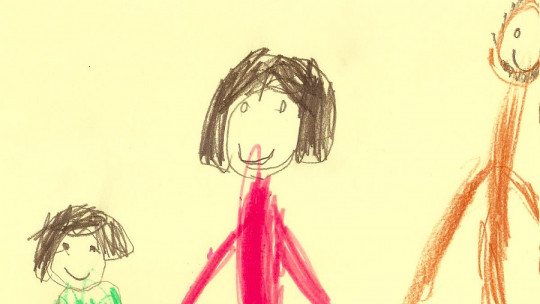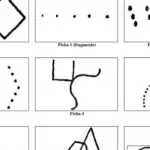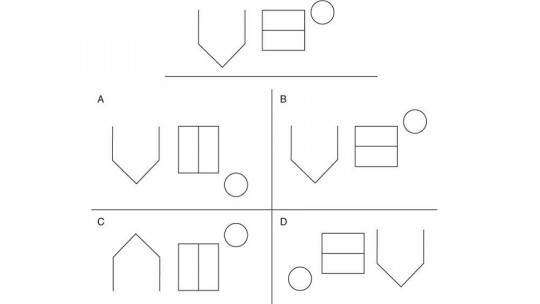In psychology, drawing analysis can be used as a projective tool, allowing individuals to express their thoughts, emotions and conflicts non-verbally. The psychological interpretation of drawings allows more or less precise diagnoses to be made about the psycho-emotional state of people.
It is a tool that can be used on both children and adults, and it is so important because it allows us to investigate the peculiarities of human beings using a “non-rational” method. In this PsychologyFor article we will talk about the meaning of drawings in psychology for adults We will specify the purpose of these drawings, we will see how to interpret them in adulthood, as well as if it is really possible for the drawings made by people and, in this case, adults, to reflect their personality.
What are drawings used for in psychology for adults?
Drawings in adult psychology are used as a form of projective assessment, meaning that individuals are asked to make drawings with the goal of reveal unconscious aspects of your personality, emotions, internal conflicts and past experiences. This approach is based on the idea that drawings can provide access to emotional and psychological material that may not be easily accessible through direct verbal communication.
For example, it may be the case that an adult is evaluated for presenting depressive behaviors, and it is necessary to use the drawing technique because with verbal techniques the person tries to manipulate the results. In addition, it may also be the case that patients do not know where their symptoms come from and the projection technique is very useful to get to the deep and unconscious cause of the problem.
Some common ways drawings are used in the psychological evaluation of adults are:
- Human Figure Drawing Test (DFH): In this test, the person is asked to draw a human figure. The analysis focuses on figure representation, anatomical details, proportion, placement on the page, and other elements. The aim is to obtain information about self-image, body perception, gender identity and interpersonal relationships. Here we tell you everything about the Human Figure Drawing Test.
- Tree Test: consists of asking the individual to draw a tree. The analysis focuses on elements such as the tree’s shape, size, roots, trunk and branches. This type of drawing can provide information about self-image, relationships with family, and emotional experiences. Here we tell you what the Koch Tree Test consists of.
- Family Drawing: The person is asked to draw their family members in a specific situation. This drawing can reveal family dynamics, interpersonal relationships, roles and conflicts. Discover all the details of the Family Test in this article.
- Thematic or projective drawings: In this approach, the individual may be asked to draw something specific, such as a dream, an ideal house, a stressful situation, among others. These drawings can provide information about the individual’s concerns, aspirations, fears and fantasies.
- Free drawing: Sometimes the person is given freedom to make a completely free drawing without specific instructions. These drawings allow you to explore creativity, personal expression and can reveal underlying themes.
How drawings are interpreted in psychology for adults
The meaning of drawings in psychology for adults is based on the analysis of various elements present in the drawings, considering aspects such as content, style, use of space and details. Below, we explain some of the most important aspects that can be analyzed when interpreting drawings in the psychological context:
- Size and location on the page: A larger drawing could suggest emotional importance or need for expansion, while a smaller drawing could indicate the opposite. Central placement can be interpreted as a sense of balance, while a lateral placement could indicate imbalance or disinterest.
- Drawing details and style: A detailed drawing might indicate attention to detail, while a simpler one might suggest a more general or superficial approach. A more realistic style could be associated with a greater connection to reality, while a more abstract style could suggest imagination or evasion of reality. For example, a drawing whose clothing presents great care and details refers to childish and egocentric people.
- Layout type: the line will be firm or soft depending on the energetic strength of the person. It will have horizontal or vertical movements depending on greater femininity or masculinity. The contracted strokes are typical of people with a certain internal rigidity, while the strokes from right to left are associated with traits of introversion, compared to the inverse stroke that is usually associated with extroversion.
- Drawing movement: Drawings with moving lines can suggest that the person is active and, in the extreme, that they have impulsive and hyperactive traits. On the other hand, very rigid drawings can indicate strong internal psychological conflicts and a possible lack of vitality.
- Colors used: Colors can have emotional connotations. For example, bright colors may indicate intense emotions, while dull colors could be associated with more somber moods. Additionally, the intensity of the colors could reflect the emotional intensity associated with certain elements of the drawing.
- Characters and relationships: On the one hand, the representation of human figures can provide information about self-image and interpersonal relationships. On the other hand, the arrangement and relationship of the elements in the drawing can reveal family or social dynamics.
- Symbolism and metaphors: The presence of specific symbols can have symbolic and emotional meanings. Interpretation may include exploring possible visual metaphors that reveal internal conflicts or significant experiences.
It is essential to highlight that the interpretation of the drawings must be carried out by psychology professionals with experience in projective techniques. As this resource presents a great deal of detail and nuance in the analyses, it is important to consider the specific context of the evaluation.

Do people’s drawings really reflect their personality?
The interpretation of drawings as an accurate and direct reflection of personality is a debated topic in psychology. Although projective drawing techniques are used as assessment tools in clinical psychology and psychological research, it is important to understand that this type of interpretation It is not an exact science and does not provide a complete or definitive portrait of a person’s personality.
Although due to the fact that making a drawing facilitates the participation of unconscious mechanisms in the human being, which escape the control of rationality and voluntary control, the analysis of these drawings constitutes a complex reflection of people’s personality evaluated. The use of this type of personal analysis and diagnosis techniques address non-verbal communication to fully evaluate the person being evaluated.
In any case, it is worth mentioning that the Interpretations of the drawings are based on psychological theories and in the idea that the unconscious elements of the mind can manifest themselves through art. However, these interpretations should be considered with caution for the following reasons:
- Subjectivity: The interpretation of the drawings is subjective and depends largely on the training and experience of the professional performing the evaluation.
- Sociocultural context: Interpretations can vary significantly depending on cultural context, personal experiences, and other individual factors.
- Variety of factors: Personality is complex and influenced by a variety of factors, not all of which are reflected in a single drawing. To understand it better, in this article you will see Personality Types in psychology.
- Temporary emotional state: The emotional state of the individual at the time of drawing can influence the result, and this state can change over time.
- artistic ability: A person’s ability to draw does not necessarily reflect their personality. Someone may have limited artistic abilities but a rich and complex personality, and vice versa.
In short, although drawings can provide valuable information about the personality of individuals, it is important interpret them with caution and always in the context of a broader evaluation that includes other methods and techniques of psychological evaluation.
This article is merely informative, at PsychologyFor we do not have the power to make a diagnosis or recommend a treatment. We invite you to go to a psychologist to treat your particular case.
If you want to read more articles similar to Meaning of drawings in psychology for adults we recommend that you enter our Clinical Psychology category.
Bibliography
- Portuondo, JA(2021). The Human Figure. Karen Machover’s Projective Test. New Library Editorial.








